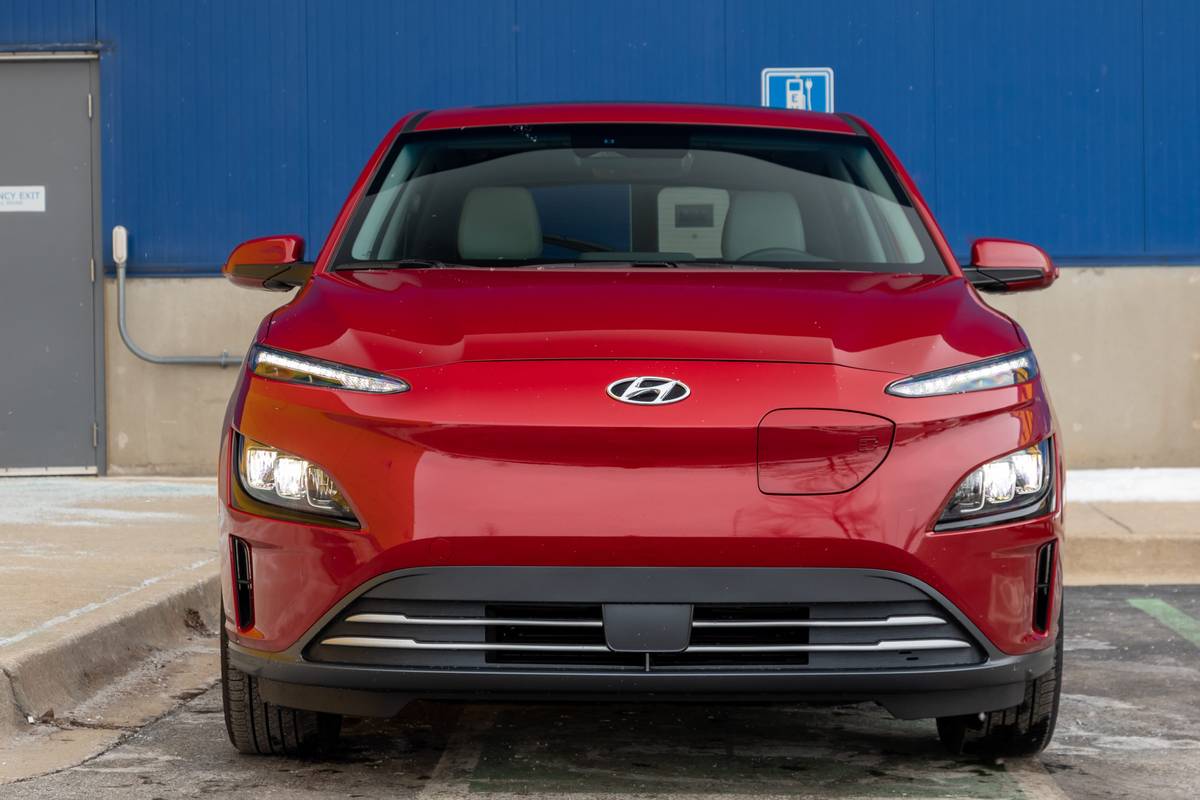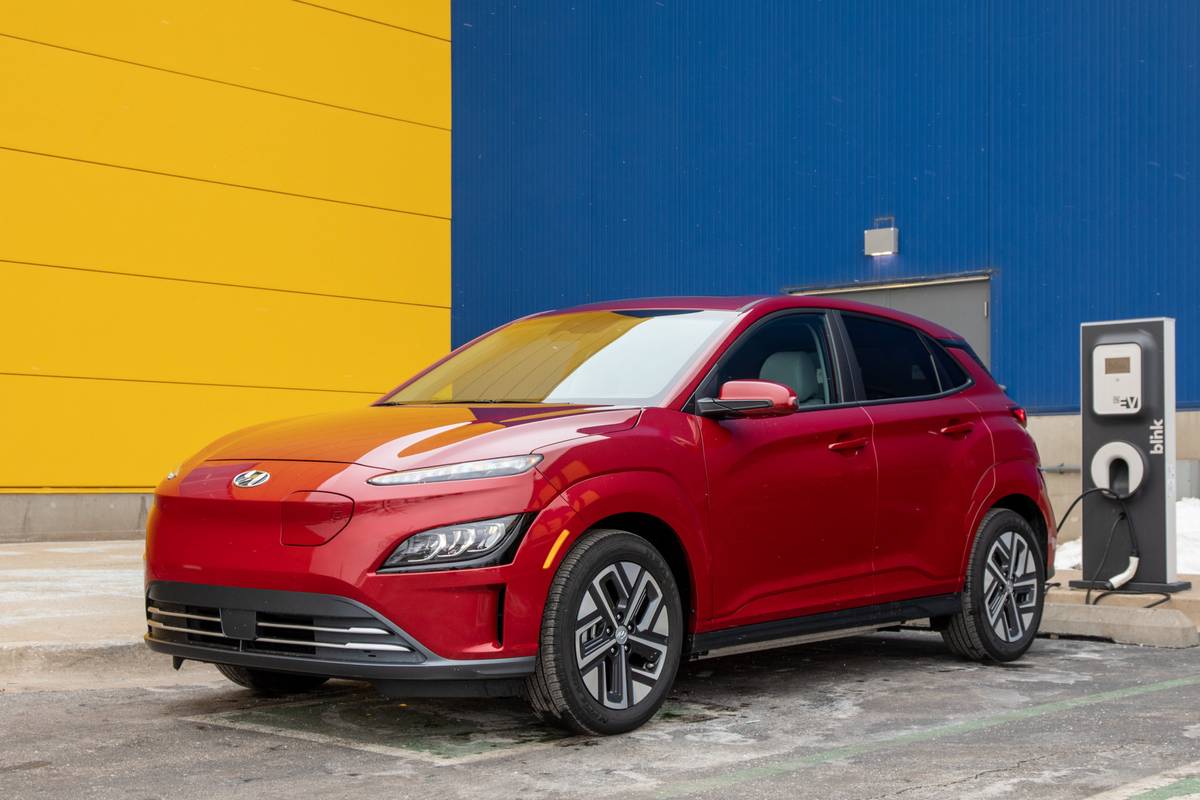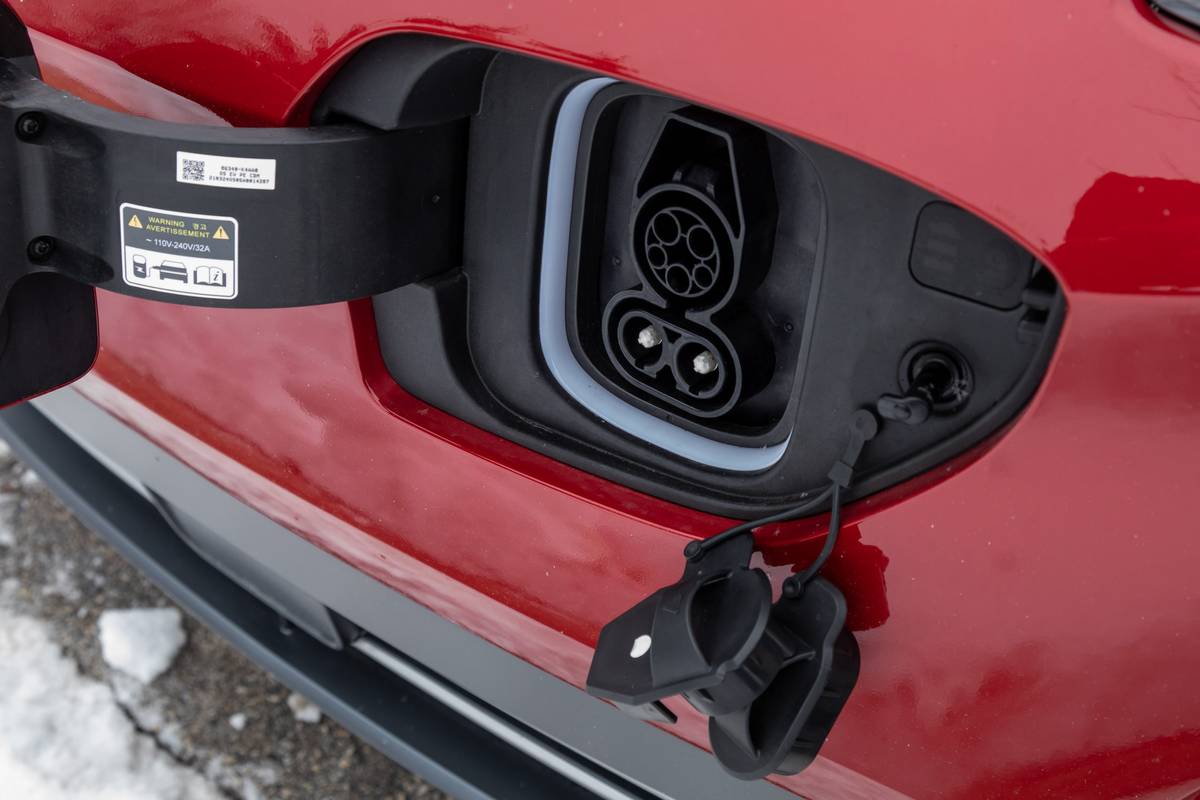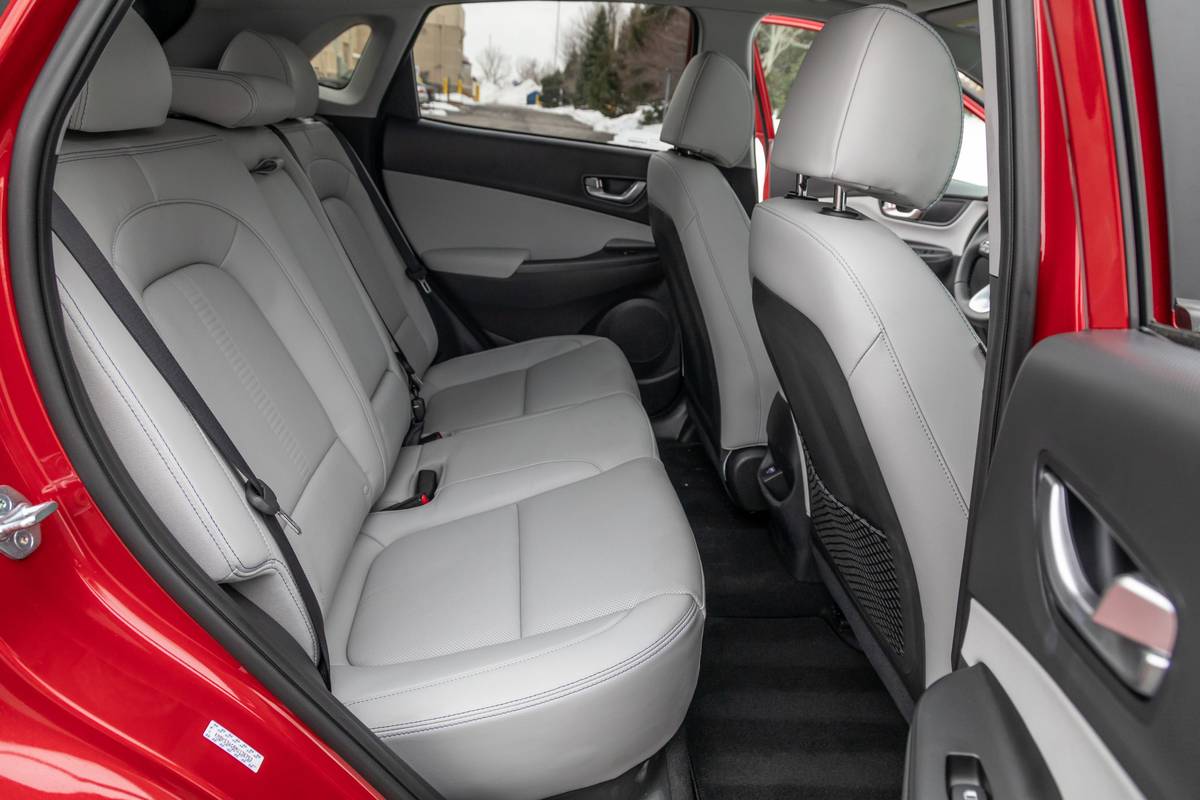Is the 2022 Hyundai Kona Electric a Good SUV? Here Are 5 Pros and 3 Cons

The 2022 Hyundai Kona Electric is a pleasant, practical subcompact SUV with decent range, entertaining road manners and a competitive price tag wrapped up in a sensibly sized package.
Related: Hyundai Kona Electric Review: A Likable, Livable EV — if You Can Find It
- ${price_badge()}
- ${battery_badge()}${ev_report_link()}
- ${hot_car_badge()}
- ${award_badge()}
- ${cpo_badge()}
${price_badge_description}
The EV Battery Rating is based on this vehicle's current expected range relative to the vehicles expected range when new. ${battery_badge_text}
Certified cars are manufacturer warrantied and typically go through a rigorous multi-point inspection.
This car is likely to sell soon based on the price, features, and condition.
${award_blurb}
${award_two_blurb}
Shop the 2022 Hyundai Kona near you


Introduced in 2019 as Hyundai’s first electric vehicle, the Kona Electric has been freshened for 2022 with updated styling inside and out along with larger standard and available touchscreens.
Beyond that, it remains largely the same. That’s a good thing; like the conventionally-powered Kona, the Kona Electric has a lot going for it, including an impressive list of convenience and safety features, plus Hyundai’s famous 10-year limited warranty. And unlike some other EVs, the Kona Electric has refreshingly simple controls. A worthy alternative to rivals such as the Chevrolet Bolt EUV and Volkswagen ID.4, the Kona Electric is competitively priced, if not cheap. It’s also still eligible for the $7,500 federal tax credit.
A big problem with the Kona Electric, however, is its limited availability. It’s only sold in 12 states, making it especially difficult to get one. What else is there to know about it? Read on to find out. Here are five things we like about the 2022 Hyundai Kona Electric and three things we don’t:
Things We Like
1. Familiar Controls

Some manufacturers still find it necessary to equip their EVs with weird controls, as if to remind drivers they’re behind the wheel of something different. Thankfully, Hyundai chose to skip that with the Kona Electric, whose controls do not require any special learning curve. Much like the gas-powered version, they’re straightforward and easy to operate.
2. Friendly Price
Make no mistake, the Kona Electric is not cheap and carries a $10,000 price premium over the gas-powered version. But its starting price of around $35,000 is competitive with the Bolt EUV and slightly less than an ID.4. The best part: The Kona Electric is still eligible for a $7,500 tax credit, something that can’t be said for the Bolt EUV. That goes a long way toward making it more affordable.
3. Enjoyable to Drive

Power comes from a 64-kilowatt-hour battery paired with a 201-horsepower electric motor and front-wheel drive. Acceleration is quick and smooth, with immediate torque from a standstill that makes for a responsive and entertaining drive. The ride feels a little stiffer than the gas version overall, but not so much as to be objectionable; it’s a relatively comfortable ride for a small SUV.
4. A Safe Bet
The Kona Electric comes with an impressive list of standard safety features, including forward collision warning with pedestrian detection and automatic braking, blind spot warning with intervention, lane departure warning with lane keep assist, rear cross-traffic alert, a driver attention monitor and rear-seat occupancy alert.
5. Efficiency Expert

With an EPA-estimated 258 miles of range and a faster recharging time than some competitors, the Kona Electric gets bonus points for efficiency. It’s good enough, in fact, to have recently earned a spot in our list of the top 10 most efficient electric cars.
More From Cars.com:
- 2022 Hyundai Kona Specs, Price, MPG & Reviews
- Here Are the 10 Cheapest New SUVs You Can Buy Right Now
- What’s the Best Affordable Small SUV?
- 2022 Hyundai Kona Review: A Cute-Ute Formula That Makes Sense
- Find Your Next Car
Things We Don’t Like
1. Reduced Rear-Seat Room

It’s not surprising to find limited rear-seat room in a subcompact SUV, with compact dimensions that preclude acres of room in exchange for increased maneuverability and other benefits. But Kona Electric buyers should be prepared to sacrifice a little in the back: With the battery pack under the floor, rear passengers sit with their knees higher than in a gas Kona, and rear legroom drops by about 2 inches.
2. No AWD Option
Part of the appeal of the gas-powered Kona is that it’s offered with either front or all-wheel drive, something not available in some subcompact SUVs. But going electric means losing that option, as the Kona Electric is only available with front-wheel drive.
3. Happiness Is Hard to Find
As much as we like the Kona Electric, its limited availability is disappointing. Hyundai has chosen to market the Kona Electric only in states that require increased sales of Es. At this point, that limits availability to California, Colorado, Connecticut, Maine, Maryland, Massachusetts, New Jersey, New York, Oregon, Rhode Island, Vermont and Washington.
Related Video:
Cars.com’s Editorial department is your source for automotive news and reviews. In line with Cars.com’s long-standing ethics policy, editors and reviewers don’t accept gifts or free trips from automakers. The Editorial department is independent of Cars.com’s advertising, sales and sponsored content departments.
Featured stories




